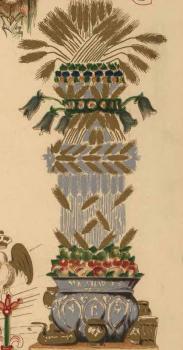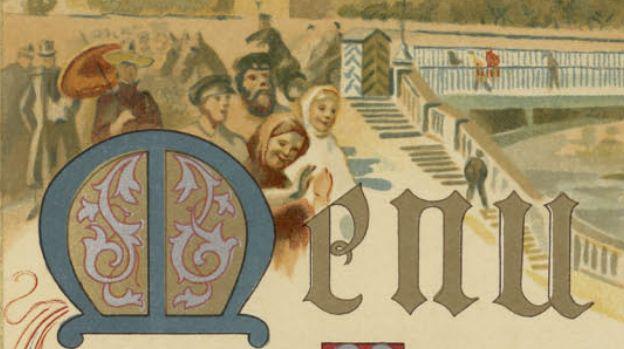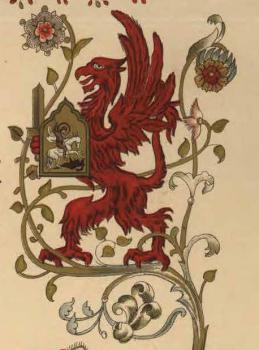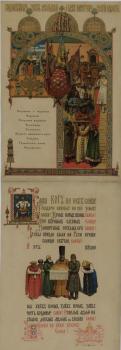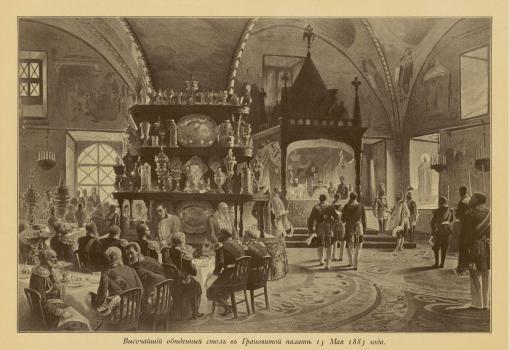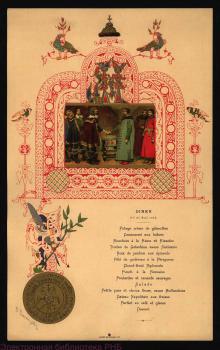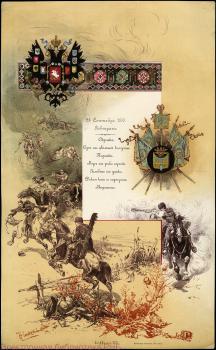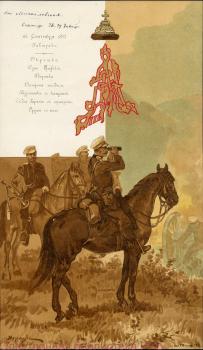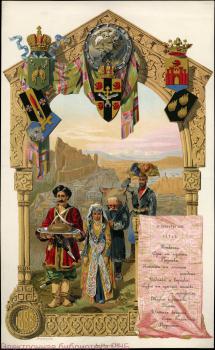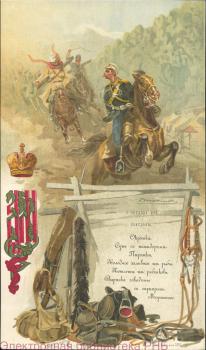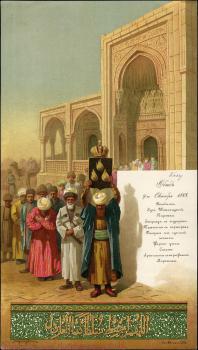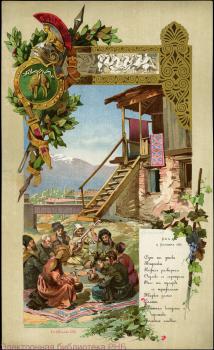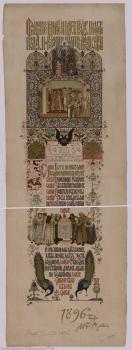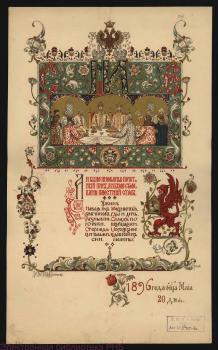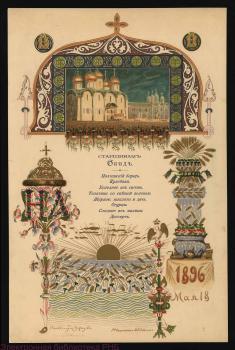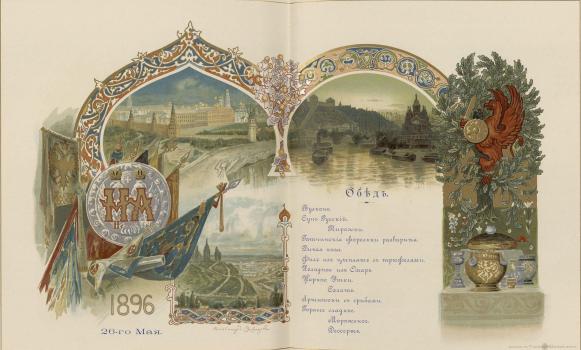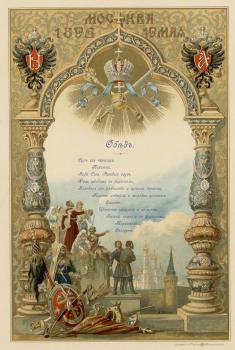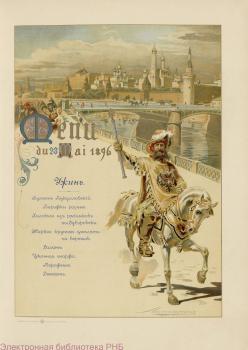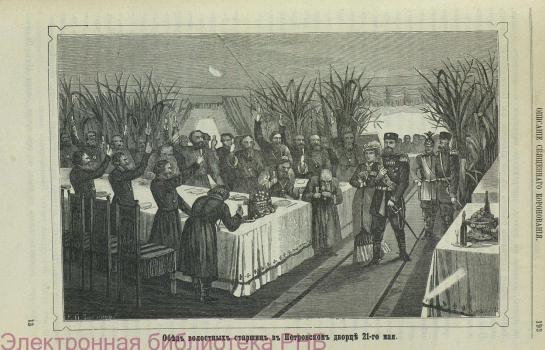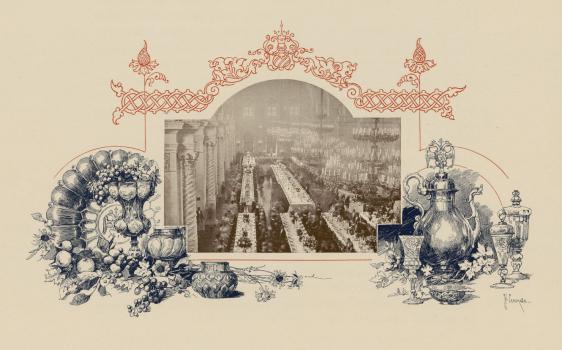Early Russian Art Menu
In the second half of the 19th - early 20th century, not only gifted amateurs, but also celebrated artists created special occassion menu designs. Now these fine menus for gourmet meals are rightly counted among the masterpieces of graphic art.
The collection of art menus resited in the Library's Prints Department has been formed over many years. It encompasses about a hundred items, some of which entered the Library in the 19th century, and some came after 1917.
Despite its small size, the collection can boast rare and early examples of art menus. In the 1850s, these were small sheets decorated with a thin, elegant ornament, frequently enclosing scenes from court life. The menus by artists who are most often unknown, were designed for the wedding days of the highest persons and for the coronation of Emperor Alexander II in 1856.
In the next decade, even leading artists began to design menu-cards. In 1866, Mihály (Mikhail) Zichy (1827‑1906) produced a menu for a dinner given to celebrate the recent marriage of Russia's Imperial Heir. In 1867, Mikhail Mikeshin (1835-1896) created an elaborated allegorical composition to honour Slavic delegations arrived in St. Petersburg. Made in the 1860s – 1870s, interesting works by Adolf Charlemagne (1826‑1901) show the clear influence of the Russian Revival style popular at that time. This style was a mixture of Byzantine and Old Russian elements.
The menus prepared for the coronation of Emperor Alexander III in 1883 are noted for an extraordinary richness of color and almost excessive splendor. Menu-cards created then by Viktor Vasnetsov (1848‑1926) reveal his talent not only as a history painter, but also as an inexhaustible master of decorative art.
As a rule, artists made a menu in the genre in which they became famous. So, in the 1880s, the landscape and seascape painter Lev Lagorio (1827‑1905) decorated the margins of a menu by poetic scenes of nature. The battle-painter Nikolai Samokish (1860‑1944) depicted scenes from military life on menus of breakfasts held during the Imperial family's trip to the Caucasus in the autumn of 1888. Beside him, the amateur artist Ivan Mezentsov designed menu-cards for breakfasts and lunches that were then held.
Menus for ceremonial lunches and dinners, given on the days of the coronation of Emperor Nicholas II in 1896, display especial festive solemnity. Menu-cards for these banquets were commissioned to such famous masters as Albert Benois (1852‑1936) and Ernest Liphart (Lipgart) (1847‑1932) , as well as Viktor Vasnetsov and his younger brother Apollinary Vasnetsov (1856‑1933) who both introduced into art Russian folk elements.
The Moscow nobility also gave magnificent Easter parties which were attended by the Imperial couple. The excellent drawings made on such occasion by Ignati Nivinski (1880-1933) in 1900 and Sergei Yaguzhinsky (1862-1947) in 1903, were based on Russian traditional motifs seen from the angle of the refined culture of the Silver Age.
Creative menus for special events were an exciting opportunity for artists. Outstanding examples of menu designs were produced for visits of foreign dignitaries, regimental holidays, anniversary parties of higher education institutions, as well as birthday celebrations. Often little-known artists designed them, but there were exceptions that include the same Nikolai Samokish and Ernest Liphart (Lipgart). In 1887, the famous writer and illustrator Nikolai Karazin (1842‑1908) created a menu design for a dinner hosted by the great artist Ivan Aivazovsky. The architect Ivan Gahlnbeck (1855‑1934) designed an ornament in the Art Nouveau style for a menu-card for a dinner party in the Finnish Life Guards Regiment. When Gahlnbeck was a young officer of this regiment, he participated in the Russian-Turkish war of 1877‑1878. A menu made by Sergei Solomko (1867‑1928) for the international conference of the Red Cross features the image of a beautiful girl wearing a Russian traditional costume, typical for his works.
It should be understood that "the author of the menu" created only the original design. An image on menus, placed on tables laid for several hundred persons, only reproduces this original drawing. Such menu cards were usually made with color lithography by the largest Russian printing companies.
Artistic menus allow for a new way of looking at familiar names and improving knowledge of forgotten artists. These names are necessary to get the most complete picture of the evolution of graphic art in the age when society shares the belief that “the things people are surrounded by in everyday life should be beautiful, not only useful”1.
А. В. Ярцева
